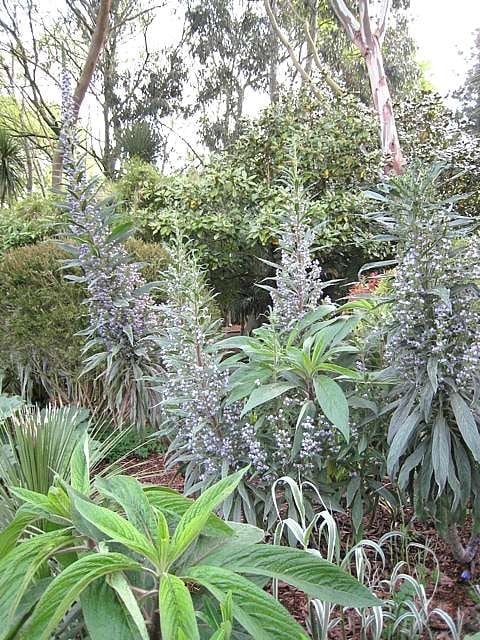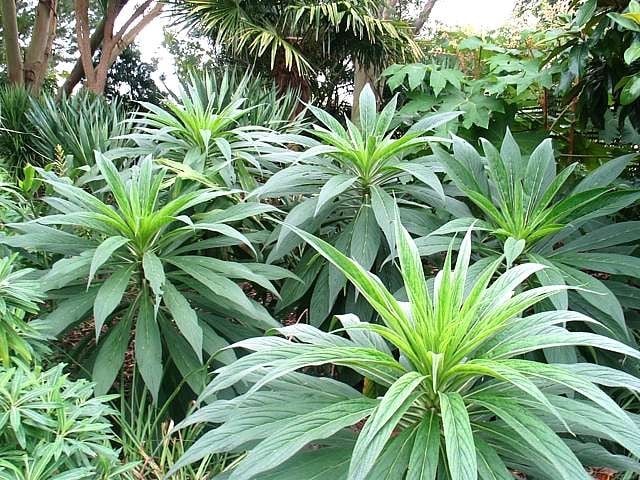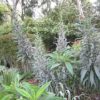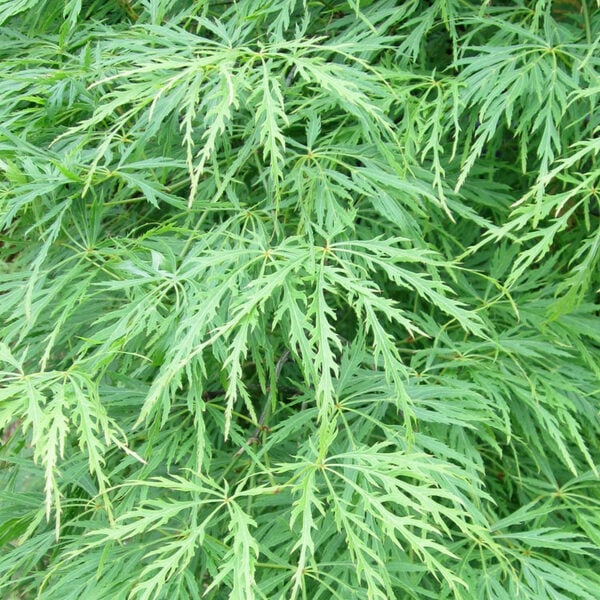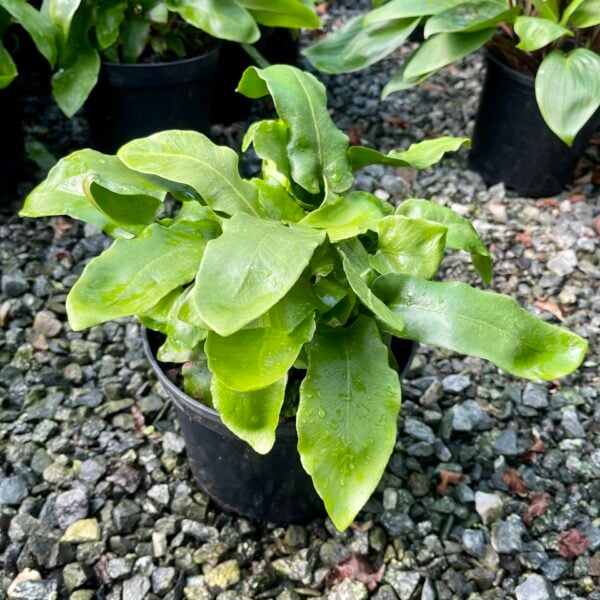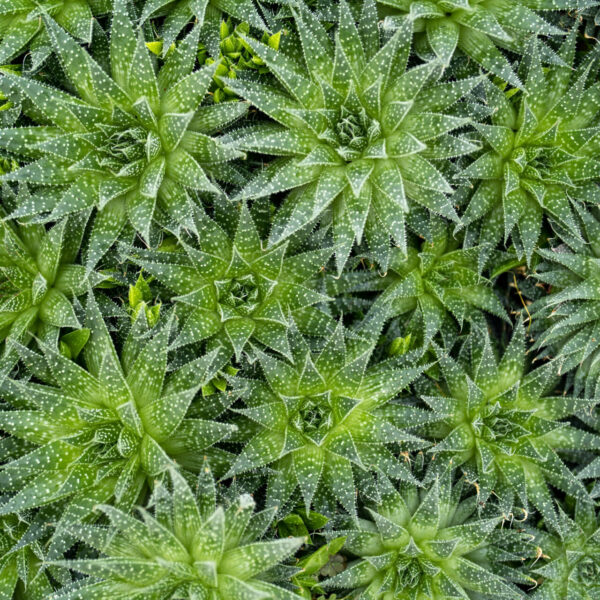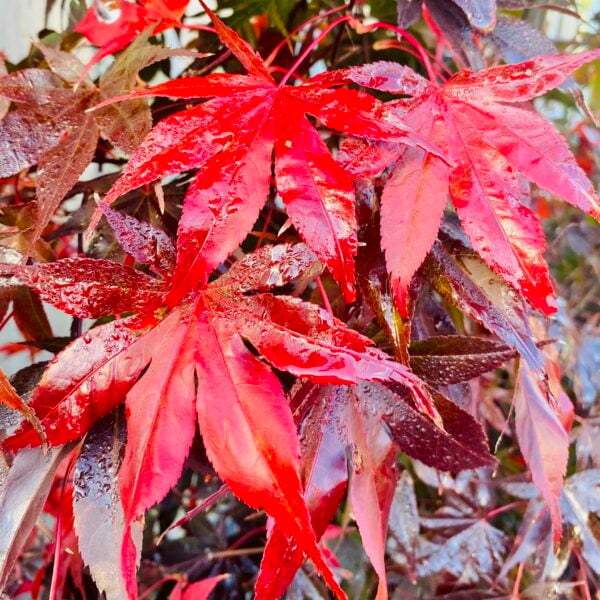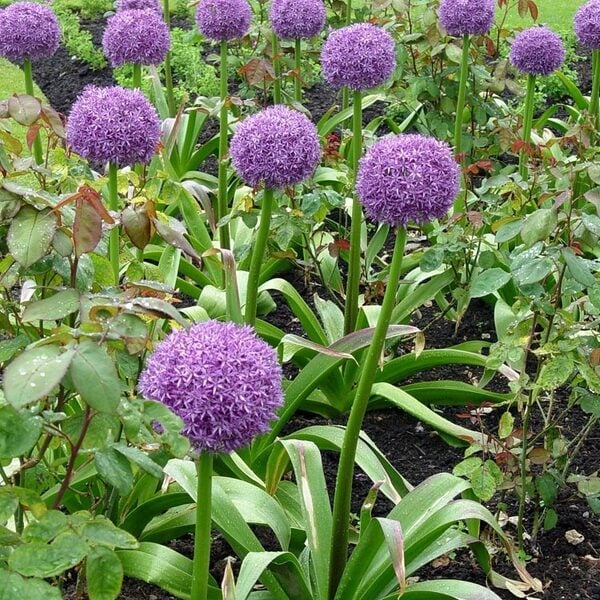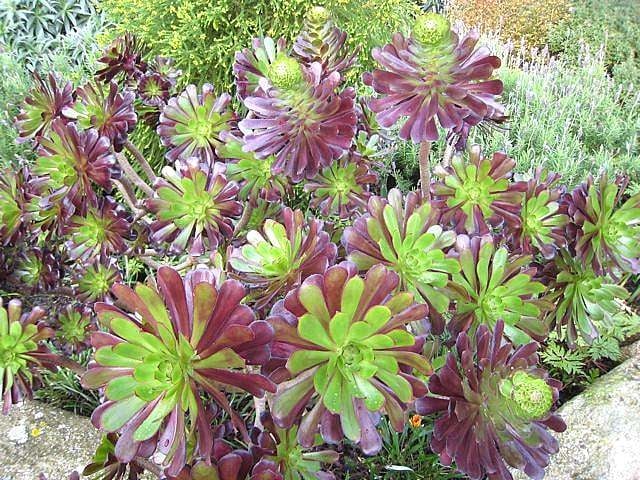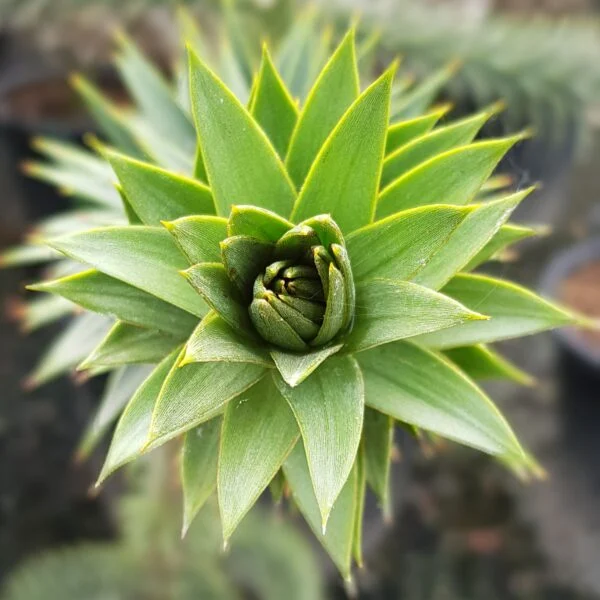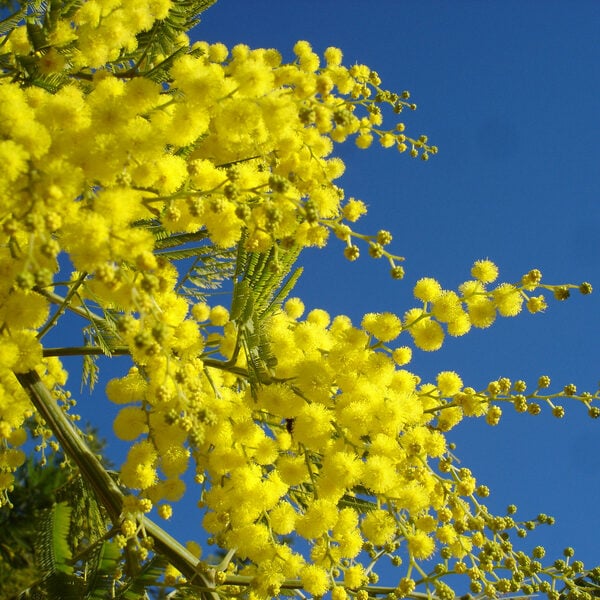Echium pininana (Tree Echium)
Amongst exoticists, this reigns supreme. The shape, the size, the flowers – all are exotic to the tips of their inflorescences. 8ft in 2 yrs. Flowers can reach 15ft. Please contact us for stock availability and sizes.

Hardiness level Red
This marvellous exotic is often the cause of much discussion. We grow them in the nursery in batches through the spring and usually have them in only relatively small numbers because they don't like being in pots and they don't like root disturbance. They'll only survive a winter in mild gardens but can be planted out in March and look fantastic by August and September and if we have a mild winter they could survive almost anywhere. The tendency is to grow to 5 or 6ft in their first year (this is really when they're at their best) and (as long as they survive their first winter), send up enormous blue flower spikes (sometimes to 15ft) in June the following year. They are self fertile so will always produce viable seed. Once the flowers have faded, you can either leave the (brown) flower spike where it is or cut it down and shake the seeds (one in each ex-flower, the size of a pin head) around the garden. The seeds seem to remain viable for many years and might germinate anytime from the same year they flowered to 15 years hence. If you like them, you'll need to get to recognise the seedlings so as not to weed them but to leave them. The best weed you ever had.
Our advice is to plant them with great care. Pretend it's not happening. Don't speak. If there's a noisy aircraft going overhead, wait for it to pass. If there's a dog barking nearby, wait for it to stop. Pretty useless advice really but these plants have strong prima-donna-ish tendencies and they don't always survive transplanting. Good luck.
If I had to have a favourite plant, this might be it. Despite its Prima Donna-ness. I first saw it in Bonchurch in the Isle of Wight in June 1984. Huge blue flowers - lots of drama but really, I like them before they flower when they have nothing but a trunk and huge umbrella-ish leaves. There were some on a compost heap in a corner of a public garden in Falmouth (Fox Rosehill, I think) that still stand out as one of the most memorable memories of that wonderful period when I was discovering plants and gardening for the first time, in my mid 30s. I think it was the richness and the warmth of the soil (it was an old compost heap), the fact it was slightly shady (it always makes things look bigger as the plants reach for the light), being in ever so mild Falmouth and that they were self sown. They were vast. One was briefly transported to the forests of giant Senecios on the slopes of Mt. Rwenzori. Remember Gorillas in the Mist?
Good drainage is important. Too wet and they'll wilt and very rarely recover. Sun or light shade. Remarkably tolerant of wind. Self sown plants used to grow round the very exposed heliport on Tresco in the Isles of Scilly. Not only did they have to deal with regular 100 mph blasts off the Atlantic but a whooping great Sikorski S-61 several times a day. They weren't nuts about it but they did survive.
For information and ideas on winter protection go to 59. Wrapping for Winter in the Glossary of Terms
Propagated by us from seed.
Additional Information |
|
|---|---|
| Soil Type | |
| Light | |
| Plant Type | |
| Continent of Origin | |
| Specialist Plants | |
| Features | |
| Situation | Coastal, Mild City Gardens, Plants for Pots, Seaside, Sheltered Garden |
| Flower Colour | |
| Hardiness | |





